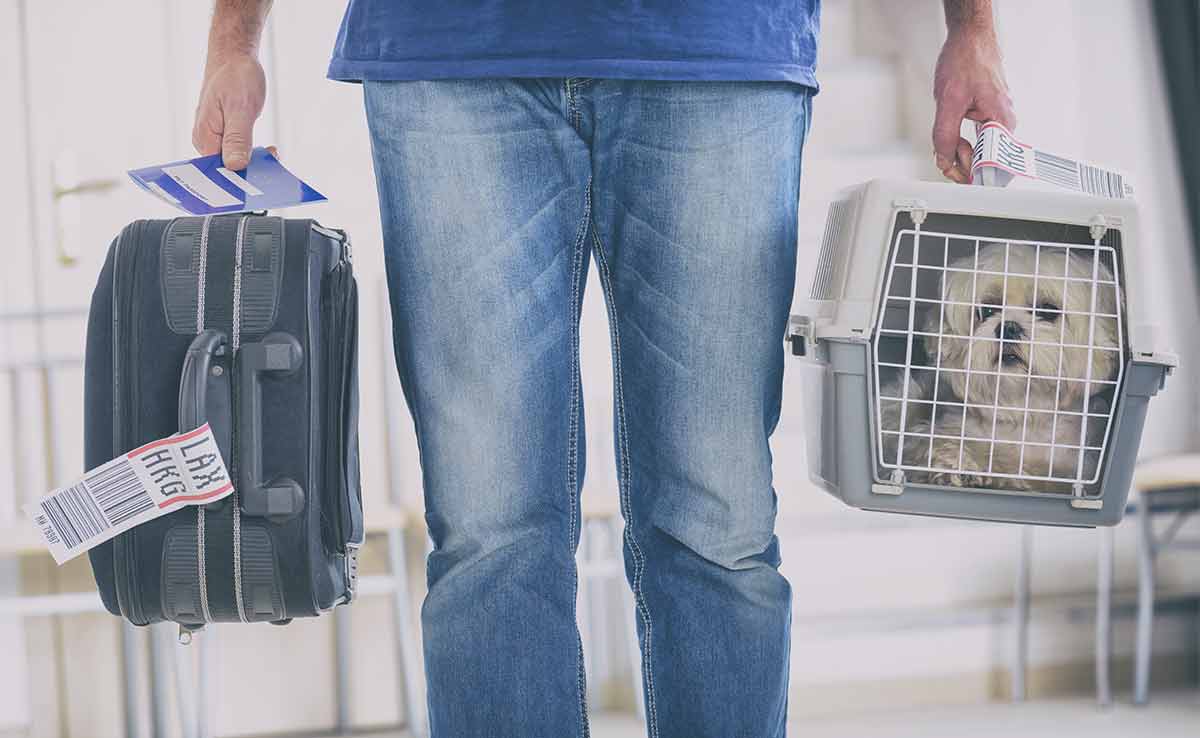Avoid Travel Nightmares With These 5 Airline-Approved Pet Carrier Picks
When you purchase through links on our site, we may earn a commission. Here’s how it works.
Ever tried negotiating legroom with a Chihuahua in coach? Flying with your pet isn’t just about tossing a leash in your airline-approved pet carrier and hoping for the best.
Table of Contents
Between strict airline policies, size limits, and making sure your anxious fluffball doesn’t bark through boarding, it’s enough to make anyone paws and reconsider.
Finding the right airline-approved pet carrier for the cabin that actually fit under the seat and keep your pet cozy, safe, and TSA-compliant is no small feat. That’s where I come in.
In this guide, I’ve sniffed out the top-rated airline pet carriers that travelers (and their pets) love most. Whether you’re jetting off for a weekend getaway or crossing the country, these in-cabin carriers will keep your furry co-pilot calm, comfy, and clear for takeoff.
| Best Overall | Wheels | Expandable | Stylish | Premium |
|---|---|---|---|---|
| Henkelion | Kopeks | Petsfit | Mr. Peanuts | Wild One |
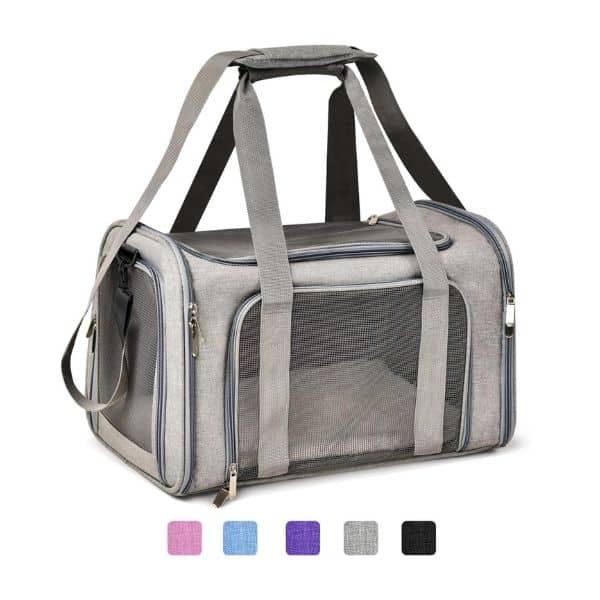 | 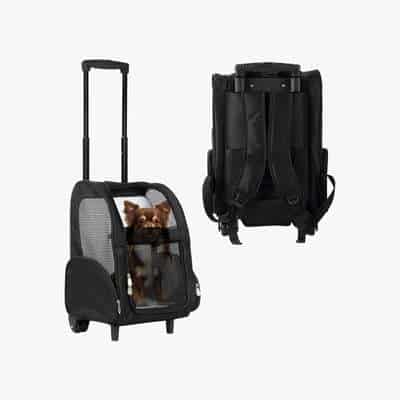 |  | 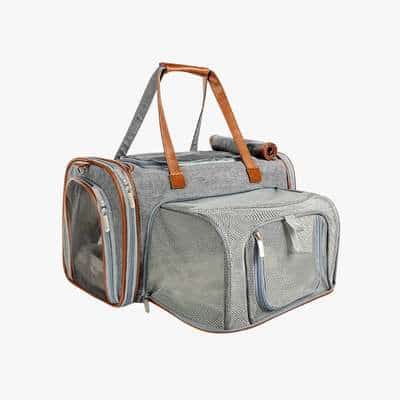 |  |
| Read Review | Read Review | Read Review | Read Review | Read Review |
| View on Amazon | View on Amazon | View on Amazon | View on Amazon | Visit Website |
3 Reasons Why Choosing The Right In-Cabin Pet Carrier Matters
It’s the difference between a smooth flight and a full-blown furball fiasco.
Whether you’re a seasoned jet-setter or flying with your pet for the first time, don’t assume any soft-sided carrier will pass. Here’s why picking the right airline-approved pet carrier in cabin actually matters a lot.
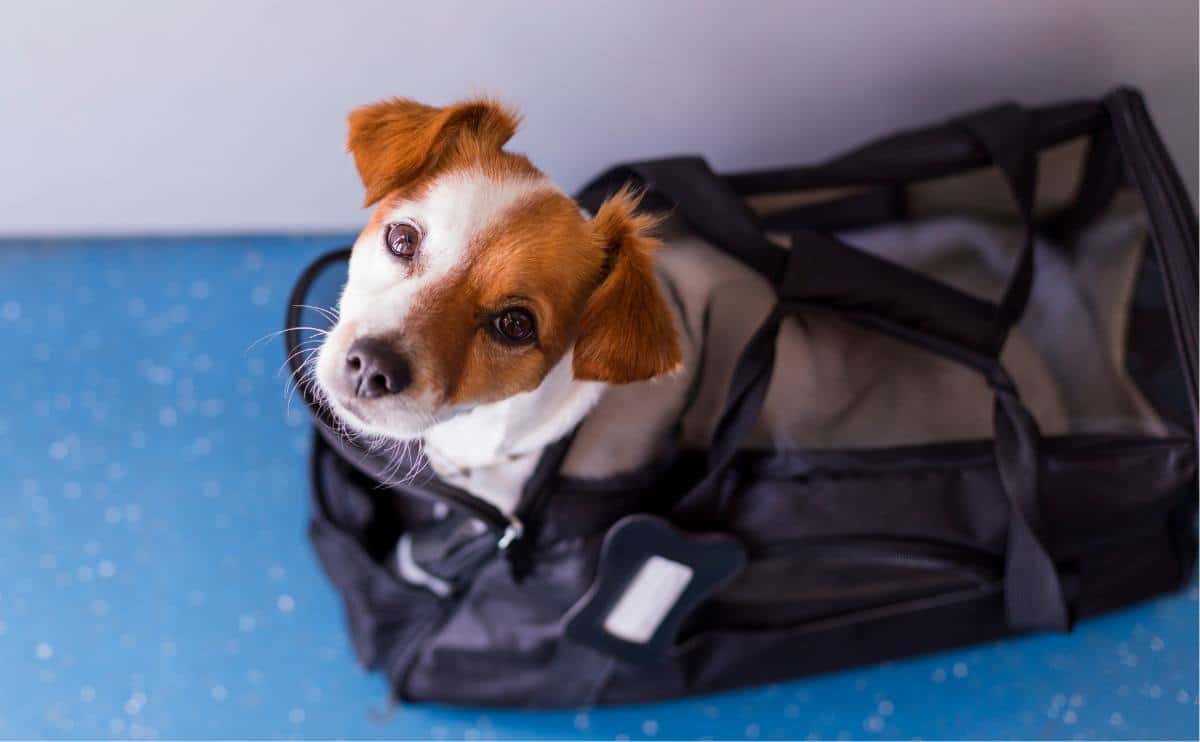
1. Denied At The Gate
Airlines have strict carrier rules, and they can change. Too big? Too tall? Doesn’t fit under the seat? Your pet could be turned away or, worse, forced into cargo. That’s a nightmare no one wants.
2. Stress = Bark Mode
Imagine being zipped into a bag with no legroom, no airflow, and a loud jet engine outside. That’s what a bad carrier feels like. A cramped or shaky setup causes barking, whining, scratching, and pure panic.
3. Make It Easy On Yourself
Dragging a bulky, off-balance carrier through TSA with one hand and holding a latte in the other? No thanks. Lightweight, well-ventilated, easy-access carriers aren’t just for your pet. They’re for your sanity, too.
Buyer’s Guide: 9 Must-Have Features
Looks aren’t everything, especially when your dog starts chewing through “aesthetic” mesh at 30,000 feet. Here’s what actually matters when choosing an airline-approved pet carrier for in-cabin. Your pet will thank you. Your fellow passengers will, too.
1. Material
That slick, trendy carrier? It might be made from tissue paper nylon. Go for waterproof, breathable, stink-resistant fabrics that can handle stress (like your dog’s… and yours).
Some of the best carriers provide a waterproof exterior that still maintains its breathability, which provides optimal airflow while also being resistant to unpleasant pet odors.
While most carriers use similar materials, they aren’t necessarily created equally. Some manufacturers use thick, heavy-duty materials and construction methods. While others cut corners with thinner, light-duty fabrics, which are obviously more prone to wear than their heavy-duty counterparts.
If you’re looking for a carrier that will stand up to whatever you can dish out, look into models that are made from heavy-duty materials that are waterproof but also breathable.
2. Ventilation
Another key concern that ties into the material used to make the carrier is how well-ventilated it is. More mesh = more airflow = less whining.
My favorite picks offer plenty of mesh sections to optimize airflow and also allow your pet to see what’s going on outside the carrier.
It’s also important that they’re made from heavy-duty mesh. Cheaper models usually feature light-duty mesh that resembles mosquito netting. Your pet’s claws will laugh at that and rip right through it.
To combat this issue, most manufacturers use resin mesh, which is much more resistant to rips and tears. Not only is this style of mesh more resistant to damage, but it’s also longer-lasting, which will ensure that your carrier will stand the test of time.
3. Build
Look for structured frames, solid stitching, and a hard floor because nobody wants a carrier that folds like a taco during turbulence. Plus, sturdy builds help nervous pets feel more secure.
You should always be thinking about construction quality as a factor when buying any product that will contain your pet. So, before deciding on the airline-approved pet carrier you think is best, it is helpful to examine the stitching or fabric welds (or whatever other construction methods the carrier uses.)
Not only do you need a carrier that’s well put together, but for soft-sided carriers, the internal frame and the base for the “floor” are also critically important.
Most carriers have a wire frame throughout the top, which helps the frame maintain its shape and prevent sagging. Many carriers also have a hard bottom that provides more stability for your pet and also helps reinforce the shape of the carrier.
These build characteristics are important for the long life of your carrier, but also because they help to keep your pet comfortable and secure within their temporary home.
4. Comfort
Of course, even the best-made carrier is useless if your dog or cat isn’t comfortable inside. Your pet deserves better than a scratchy duffel bag. You’re on the right track if it feels like a nap spot.
Look for carriers that feature a plush or faux fur lining throughout, especially when it comes to the area where your dog or cat will be lying down. You should also be able to remove the lining to wash it whenever necessary.
5. Locking Zippers
If your pet’s ever opened a zipper with their nose, congrats, you’ve raised a genius. Now buy a carrier with locking zippers so they don’t Houdini their way down the aisle.
Locking zippers makes it impossible for escape artist pets to open their carriers and get out without your knowledge. This is critical for the safety and security of your fur baby.
Most carriers feature two zippers for each opening, but the best options have clips on each zipper that can be attached together. They lock your pet inside the carrier so they can’t escape until you decide it’s time to let them out.
6. Storage Pockets
You’ll want zippered pockets for treats, toys, wipes, poop bags, medication, and maybe even your own stuff. Because digging through your checked bag for dog Xanax mid-flight? Not ideal.
Sure, you could just as easily place these items into other pieces of luggage, but having onboard storage in your airline-approved pet carrier allows you to keep all of your pet’s stuff together and easily accessible.
Some models feature slit pockets, while others have more secure pockets with zippers or Velcro. If you’re going to be storing important or valuable items, it may be best to purchase a carrier that has zippered storage.
7. Washable
Let’s be real: flying is stressful, and pets don’t always hold it. Go for a carrier that’s machine washable or has wipe-clean liners. Future you will be grateful.
That way, you can just toss your carrier into the wash instead of needing to replace it. This helps to keep things fresh and control odor because no one wants Eau de Wet Terrier mid-flight.
8. Easy Access
One of the most critical and often overlooked aspects of buying a pet carrier is how easy it is for you to get your dog or cat inside. If your pet resists carriers like vampires hate daylight, you need one that opens wide and closes fast.
Top and side openings = fewer wrestling matches at the gate. It’s critical that your carrier opens wide and is easy to manipulate. That way, even if your pet is trying their hardest to resist entering their carrier, you’ll still be able to get them securely inside their travel home.
9. Wheels, Handles & Straps
Shoulder strap? Padded handle? Backpack mode? Wheels? The best carriers offer all three. Choose what works for you. Your back, arms, and nerves will thank you after terminal sprints and TSA delays.
The top carriers that are endorsed by most major airlines provide multiple carrying points, such as handles and shoulder straps. These handles should be well-padded and ergonomically designed to reduce fatigue as you carry your pet.
Some options even feature wheels so you can easily wheel your pet behind you without having to put added stress on your hands or back. There are even backpack-style carriers that you can wear, just like a book bag.
Airline-Approved Pet Carrier Sizes
Here are the recommended size requirements and dimensions for the major U.S. Airlines:
| Airline | Hard-Sized Size | Soft-Sided Size |
|---|---|---|
| Alaska | 17″ L x 11″ W x 7.5″ H | 17″ L x 11″ W x 9.5″ H |
| American | 19″ L x 13″ W x 9″ H | 18″ L x 11″ W x 11″ H |
| Delta | Varies depending on the aircraft | 18″ L x 11″ W x 11″ H |
| Frontier | 18″ L x 14″ W x 8″ H | 18″ L x 14″ W x 8″ H |
| Jet Blue | 17″ L x 12.5″ W x 8.5″ H | 17″ L x 12.5″ W x 8.5″ H |
| Southwest | 18.5” L x 13.5” W x 9.5” H | 18.5” L x 13.5” W x 9.5” H |
| Spirit | 18″ L x 14″ W x 9″ H | 18″ L x 14″ W x 9″ H |
| United | 17.5″ L x 12″ W x 9″ H | 18″ L x 11″ W x 11″ H |
Airline pet policies aren’t set in stone – they’re more like turbulence. So, always confirm your specific airline’s pet requirements before every trip. Carrier size limits and in-cabin pet rules can vary between airlines, and even between aircraft on the same airline. Please double-check to avoid last-minute surprises at the gate.
Top 5 Rated Airline-Approved Pet Carriers
After extensive research, here are the best airline-approved pet carriers in cabin that pets and humans actually like. These aren’t just cute (although some are incredibly stylish!) They’re airline-compliant, durable, and stress-tested by real travelers, including our own team.
Best Overall: Henkelion Airline-Approved Pet Carrier Review
One of the most popular carriers on the market from a trusted brand in the pet industry, this bag is perfect for dog or cat owners looking for a classic carrier that’s available in two sizes.
This carrier features a quilted nylon exterior with mesh side and top panels, providing tons of ventilation and maximum visibility for your pet. A wide zipper panel on the top and a side zipper that opens flat make it easy to get even the most agitated dog or cat into their carrier with less stress.
There’s also a luggage strap and a padded shoulder strap for carrying ease. It also has a zippered rear pocket, which provides plenty of room to store treats and accessories.
A patented wire frame can be compacted down several inches so that even the largest size available can still fit underneath your seat to comply with airline regulations. Locking zippers ensures that your pet is securely inside their carrier at all times.
This option balances quality and cost and is one of the most popular options highly rated by like-minded travelers.
Sizing
- Medium: 17″L x 11″W x 11″H; up to 15 pounds
- Large: 20″L x 13″W x 13″H; up to 25 pounds
Price
- Starts from $39.99
Best With Wheels: KOPEKS Deluxe Backpack Airline-Approved Pet Carrier Review
If you’re looking for a pet carrier that does it all, the KOPEKS Deluxe Backpack Pet Travel Carrier is also worth a look. It’s designed for small to medium pets (up to 10 lbs) and features padded backstraps for when you need to place it on your back.
You can roll it like luggage, carry it by the handle, or wear it as a backpack. The telescoping handle extends easily, and when fully deployed, the carrier stands tall at 41″, making it easy to maneuver through airports without hunching over.
This makes it a lifesaver in crowded terminals where your arms need a break and your pet needs stability.
The carrier is built from durable 600D Oxford fabric with three mesh ventilation panels to keep your pet cool and visible. It includes two roomy side pockets for storing treats, toys, or travel documents.
Inside, it’s surprisingly spacious and stable, with just enough room for your pet to sit or lie comfortably. The base is firm and padded, which helps with both structure and comfort.
It comes in three colors and two sizes. However, the dimensions of the large option aren’t suitable for in-cabin travel. This bag comes with a two-year warranty (conditions apply).
Sizing
- Small/Medium: 13″ L x 12″ W x 20″ H; up to 10 pounds
- Large: 13″ L x 17.5″ W x 20″ H; up to 18 pounds
Price
- Starts from $69.95
Best For Room: Petsfit Expandable Airline-Approved Pet Carrier Review
The Petsfit Expandable Airline-Approved Pet Carrier is a smart, travel-friendly option designed for pet comfort and human convenience. One of its standout features is the expandable mesh sides, which unzip to give your pet extra space to stretch out. This is a significant bonus during layovers or delays.
It comes in three sizes, and the small and medium versions are sized to meet most airlines’ in-cabin requirements, making it a solid choice for frequent flyers.
Durability-wise, it’s built with anti-scratch mesh and reinforced with a sturdy wire frame to help it keep its shape during travel. Inside, it’s equipped with a soft, washable plush mat and a built-in safety leash, giving your pet a comfortable and secure space to rest.
Carrying the bag is relatively easy thanks to multiple options, including flexible hand straps, a detachable shoulder strap, and a back strap that attaches to rolling luggage.
Sizing
- Small: 16″ L x 10″ W x 9″ H; up to 9 pounds
- Medium: 17″ L x 11″ W x 11″ H; up to 13 pounds
Price
- Starts from $65.99
Most Stylish: Mr. Peanuts Soft-Sided Airline-Approved Pet Carrier Review
A well-made carrier that looks great and provides plenty of comfort for your furry friend, this stylish carrier looks more like a modern weekend bag than a pet carrier, and it’s among the more attractive options available.
This carrier features a colored exterior (5 colors available) with tan piping and a tan leather strap. A matching I.D. tag on the shoulder strap is also included. The sides of the bag zip down fully, making it easy to get your pet inside, and the mesh window also zips open.
One side of the bag is expandable to provide your pet with more room to relax. All of the zippers are locked for added security.
This Mr. Peanut carrier isn’t just stylish. It’s built to last, too. This one features a leather bottom with rubber feet, a durable plywood bottom, and a plush mattress pad to keep your pet comfortable despite the hard bottom below.
Sizing
- 18″ L x 10.5″ W x 11″ H; up to 15 pounds
Price
Premium Option: Wild One Airline-Approved Pet Carrier Review
Want an airline-approved pet carrier that doesn’t scream “generic travel bag”? The Wild One nails the sweet spot between function and fashion. It’s got all the must-haves: a soft, plush mat for your pup, dual-direction zippers, and clip-together closures for extra safety.
The full mesh front gives your dog a clear view and plenty of airflow, even without side windows. Both sides unzip for easy access, and the padded shoulder strap cleverly doubles as a leash (yes, really).
Storage? Covered. You’ll find multiple zipper pockets, including a phone slot, so you’re not digging for treats mid-flight. Carry it by the handles or wear it crossbody. Either way, it’s a comfy ride for both of you.
Available in black, tan, and spruce green, with a 1-year warranty and matching Wild One accessories if you’re into coordinated dog style.
Sizing
- 17.5” L x 11” W x 10” H; up to 16 pounds
Price
Our Personal Experience With Wild One’s In-Cabin Pet Carrier
Our 15-pound dog has plenty of room and seems very cozy inside. He likes being able to pop his head out of the corner to look around. The high-quality material makes it durable and easy to clean. The padding on the bottom is spongy and supportive, almost like an orthopedic bed. It has all the strength of a heavy-duty carrier at a lighter weight than the average, making it easier to carry.
– Sadie Cornelius, Parent to Cavalier King Charles Spaniel & Creative Marketing for Canine Journal

In-Depth Wild One Review
Want the full scoop on this stylish favorite? Check out our in-depth review of the Wild One airline-approved pet carrier. Plus, a closer look at their matching harnesses, leashes, and travel accessories.
How To Measure Your Pet
“Small dog” doesn’t mean airline-approved, and “small bag” might not fit your small dog.
One of the biggest mistakes pet parents make? Guessing. You eyeball your pet, grab a “small” carrier online, and assume you’re good to go. Until the airline agent tells you, it won’t fit under the seat. Or it comes, and it’s way smaller than you thought.
Now you’re panicking at the gate while your pet looks equally betrayed.
Avoid the drama. Airlines have strict rules that require your pet to be able to stand up, turn around, and lie down comfortably inside the carrier. That means getting accurate, real-world measurements before you shop. Here’s how to do it right the first time.
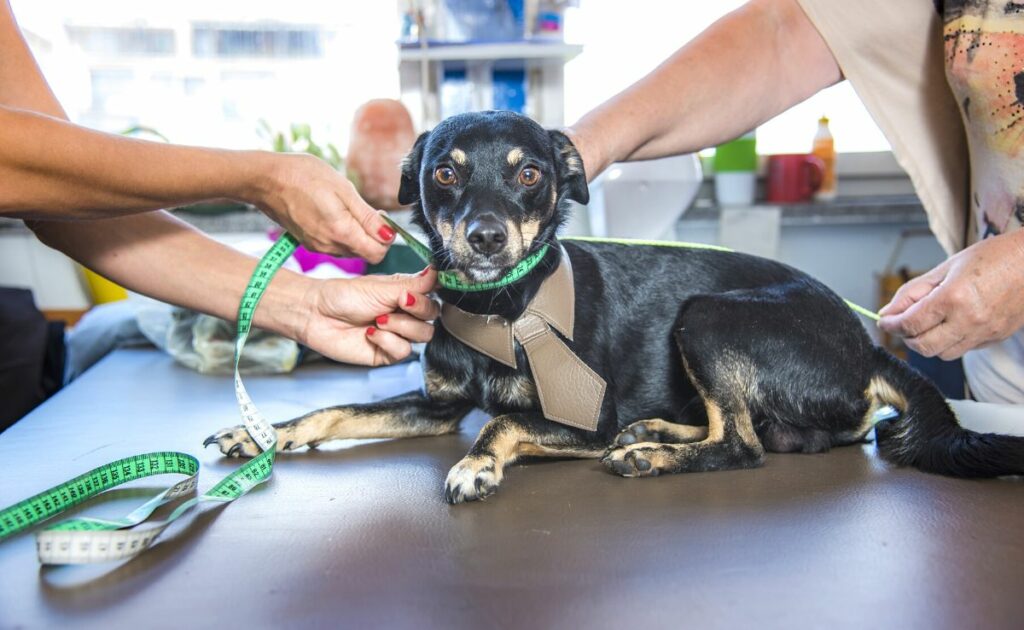
1. Length
Measure from the nose to the base of the tail (not the tip). This tells you how much horizontal space your pet needs to lie down comfortably.
2. Height
Measure from the floor to the top of the ears or head, whichever is taller, while your pet is standing. Carriers need to allow them to stand, turn, and lie down without hunching.
3. Width
It’s not always listed, but it’s still critical. If your pet is wide-bodied or muscular, make sure they’ll have room to move, not just squeeze in.
4. Other Sizing Tips
- Add 1–2 inches to each measurement to give your pet breathing room.
- Soft-sided carriers offer some flexibility, but don’t count on compression saving you if it’s clearly over.
- Test fit: If your pet can’t turn around and lie down naturally in the carrier, it’s not a fit, no matter what the tag says.
- Always follow the specific product guidelines when measuring your pet.
7 Things To Know Before Traveling With Your Pet
A little prep goes a long way. Whether it’s your pet’s first or fifth flight, these tips will help you travel smarter, calmer, and cleaner. No panic, no surprises.
1. Airlines Make Their Own Rules
There’s no universal standard for flying with pets. Carrier size, weight limits, breed restrictions, and fees can all vary by airline and sometimes even by aircraft. Before you book, check your airline’s pet travel policy directly on their website.
2. Line The Carrier
Even well-trained pets can get nervous in new environments. Line the inside of the carrier with a pee pad or absorbent liner to catch any accidents. It’ll save you (and your pet) from a messy, stressful cleanup mid-flight.
3. Burn Off That Energy
Before you leave for the airport, give your dog a long walk, a play session, or a trip to the dog park. The goal? Tire them out so they’re more likely to rest during the flight instead of pacing or whining.
4. Check In With Your Vet
If your pet gets anxious in the car, flying might be a whole new level of stress. Talk to your vet about natural calming treats, anti-nausea meds, or a light sedative, especially if it’s a long flight or your pet hasn’t flown before.
5. Plan Potty Breaks
Map out where and when your pet will get bathroom breaks before you board. Most major airports now have pet relief stations inside the terminals. Use them right before boarding to avoid mid-air discomfort.
6. Board Early If You Can
Ask the gate agent if you can pre-board with your pet. The earlier you settle in, the more time your pet has to get comfortable before the noise and chaos of full boarding begins.

7. Do A Trial Run
Don’t wait until flight day to test the carrier. A week or two before travel, take your pet on short car rides in their carrier or spend time with them zipped inside it at home. You’ll quickly learn if there are issues with fit, comfort, or nerves, and you’ll have time to fix them.
Carrier Training 101: 6 Steps
Don’t wait until flight day to introduce your pet to their carrier. Imagine being zipped into a small, noisy box for the first time, surrounded by strangers, jet engines, and turbulence.
For your pet, that’s what air travel feels like unless you’ve put in the time to make their carrier feel like a safe space, not a scary one.
The good news? A few simple training sessions can turn the carrier into your pet’s happy place. Here’s how to do it right:
Step 1: Make It Familiar
Set the carrier out long before your trip, at least a week in advance, if you can. Keep it open in a low-traffic spot where your pet already feels safe.
Toss in a blanket that smells like home or their favorite toy. Let them explore it at their own pace without forcing anything. The goal is simple: let the carrier become part of their normal environment.
Step 2: Use Treats & Praise
Every time your pet sniffs, enters, or relaxes in the carrier, reward that behavior. Use training treats, gentle praise, or even a meal inside the carrier. Make it a positive association. This isn’t a trap; it’s a cozy hideaway with snacks.
Step 3: Close The Door
Once your pet is willingly entering the carrier, start closing the door for short intervals. Sit nearby and keep things calm. Don’t walk away or leave the room at first.
Slowly build up the time they spend inside, always rewarding quiet, relaxed behavior.
Step 4: Add Motion
When they’re comfortable being closed in, start introducing movement. Carry the carrier around the house, up and down stairs, or even out to the car. Try a few short drives.
This helps them get used to the sensation of travel before the actual flight.
Step 5: Simulate Security
At the airport, you’ll need to remove your pet from the carrier at TSA. Practice this at home: take them out calmly, hold them while the empty carrier “goes through the scanner” (or just set it aside), then put them back in.
A leash or harness is a must, even for cats. The more familiar this process feels, the less likely it is to go sideways in public.
Step 6: Go Slow
Carrier training doesn’t need to take long but don’t rush it. Some pets adjust in a day, and others need a week or two. Give them space to build confidence, and don’t wait until the night before your flight to start.
A pet who’s calm and comfortable in their carrier = a quieter flight, a smoother check-in, and way fewer judgmental looks from your seatmate in 16B.
Pet Travel Checklist
Forget one thing, and you’re scrambling at the gate. Here’s everything you actually need to pack when flying with your pet. No clutter, just the must-haves.
- Airline-Approved Pet Carrier. Double-check the size and that it fits under your specific airline’s seat dimensions.
- Leash + Harness. Required at TSA, you’ll need to take your pet out of the carrier during screening.
- Pee Pads or Absorbent Liners. Even the best-trained pets can have in-flight accidents. Line the carrier just in case.
- Collapsible Water Bowl. Lightweight, easy to store, and keeps your pet hydrated during delays.
- Treats. For calming, distraction, or just being a very good flyer.
- Favorite Blanket or Toy. Familiar scents help reduce anxiety and make the carrier feel like home.
- Wet Wipes or Towel. For fast cleanups if there’s an accident or a slobbery moment.
- Vaccine Records & Health Certificate. Required by some airlines and destinations. Keep printed and digital copies of vaccinations.
- Medications. Don’t pack these in checked luggage. Keep them accessible in your carry-on.
- Poop Bags. Yes, you’ll still need them, especially during layovers or at airport relief stations.
FAQs About Flying With Pets
Still have questions? Here’s what pet parents always want to know before boarding a flight. If you have a question I haven’t listed below, please ask us in the comments, and we will find the answer.
What Size Should A Pet Carrier Be For Airline Travel?
Airlines typically require that in-cabin carriers fit under the seat in front of you. Soft-sided carriers are more flexible, but your pet still needs to stand up, turn around, and lie down comfortably inside.
What Are The Airline-Specific Rules For Pet Carriers?
Carrier size and weight limits vary by airline and sometimes even by aircraft. Head back to our airline-approved pet carriers size guide for more info. But always remember to double-check with your airline before flying, as these can change at any time. Under-seat space can also vary even within the same airline.
Can My Pet Sit On My Lap During The Flight?
No. Pets must remain inside their carrier, under the seat, for the entire flight. Taking them out, even to hold, can result in airline warnings or even being removed from the flight.
Is It Safe To Sedate My Pet Before Flying?
Only if your veterinarian explicitly recommends it. Some sedatives can interfere with your pet’s breathing at altitude. Never medicate your pet before a flight without professional guidance.
Can I Bring More Than One Pet In A Single Carrier?
Usually not. Most airlines allow one pet per carrier and charge per pet. Some may permit two small animals in one carrier if they’re the same species and size but always call ahead to confirm.
What Documents Do I Need To Fly With My Pet?
For U.S. domestic flights, you may need vaccination records and sometimes a health certificate dated within 10 days of travel. For international travel, prepare for microchipping, rabies titers, special permits, and possibly quarantine, depending on the country. Again, it’s crucial to check with your airline before traveling.
How Do I Determine The Right Size Carrier For My Pet?
The best way to decide if the carrier is the right size for your dog or cat is to measure how tall and long your pet is and then compare that against the measurements for the carrier.
Try to buy the largest carrier possible to provide your pet with the most room to move around and relax. If your pet is unable to turn around inside the carrier, that’s usually an indicator that you should look for a larger option.
Can I Fly With A Large Or Giant Breed Dog In The Cabin?
If you have a large or giant breed dog, in-cabin travel isn’t allowed. Most airlines set strict size and weight limits that large dogs easily exceed. Instead, your dog would need to fly in the cargo hold, which is specially pressurized and temperature-controlled for pet transport.
However, flying cargo isn’t always ideal. It can be stressful for some dogs, especially on long or multi-leg flights. If possible, a safer and more comfortable alternative is to travel by car using a giant, well-ventilated crate that gives your dog plenty of space and reduces anxiety.
For long-distance travel, some pet parents opt for ground transport services or even professional pet relocation companies.
Can I Still Choose My Seat If I’m Traveling With A Pet?
Usually, yes, but with some limitations. Most airlines allow you to select your seat when flying with a pet as long as it meets their in-cabin requirements. However, aisle seats are often off-limits since they typically have the least under-seat space. Some airlines won’t allow pets in these seats at all.
Your best bet is usually a window or middle seat, where there’s more under-seat clearance. Just make sure to confirm seat restrictions directly with the airline before booking, as policies vary by carrier and aircraft.
What Are The IATA, TSA, & FAA, And Why Are They Important?
These are different organizations tasked with drafting safety regulations for passenger air travel. IATA stands for International Air Transportation Association, TSA stands for Transportation Security Administration, and FAA stands for Federal Aviation Administration.
Before flying, you should visit each administration’s website so you can learn about their different regulations to ensure that you and your pet are traveling safely.
Some of these agencies even offer independent certifications that state that a particular carrier is approved for use on airlines. However, these certifications aren’t required for a carrier to be permitted on an airplane.
More Ways To Travel Smart With Your Dog
Planning a trip with your pup doesn’t end with picking the right carrier. If your dog struggles with nerves, check out our guide on dog travel anxiety. It’s full of calming strategies and vet-backed tips to help your pet stay relaxed on the go.
Dreaming big? We’ve also rounded up some bucket list adventures for dogs that are perfect for pups who love the open road (or the sky).
Before you set off, don’t forget safety. Our top picks for GPS dog collars can give you peace of mind in crowded airports or unfamiliar destinations.
Whether you’re going across the country or just a few states away, having the right pet insurance can provide more peace of mind if the unexpected happens mid-trip. Wherever you’re headed, we’ve got the resources to help you and your dog travel smarter and stress-free.
Have a travel tale (or disaster) with your dog or a favorite airline-approved pet carrier in cabin? Drop it in the comments! We’d love to hear how your pup handled their first flight, road trip, or airport adventure.



